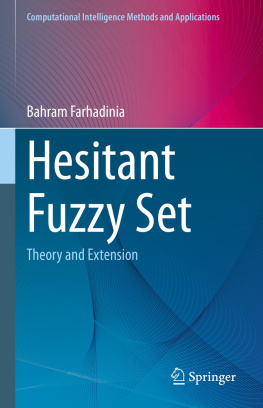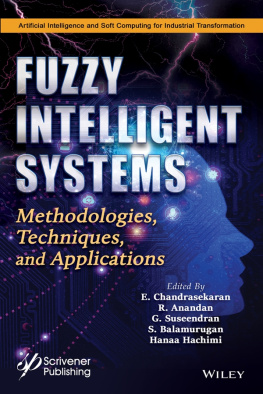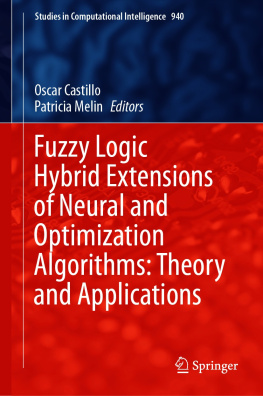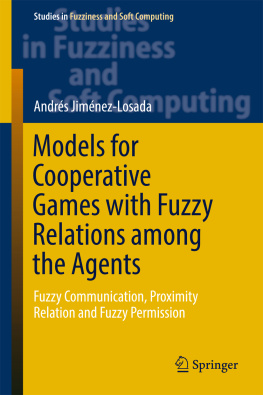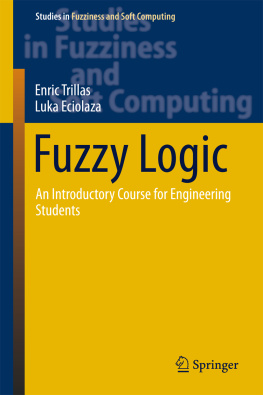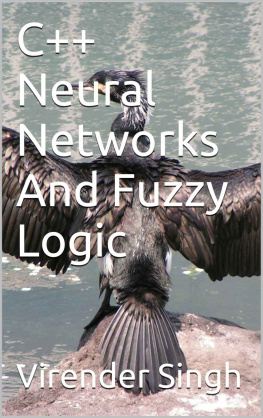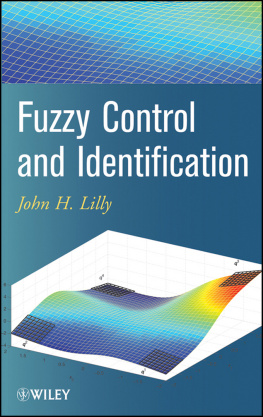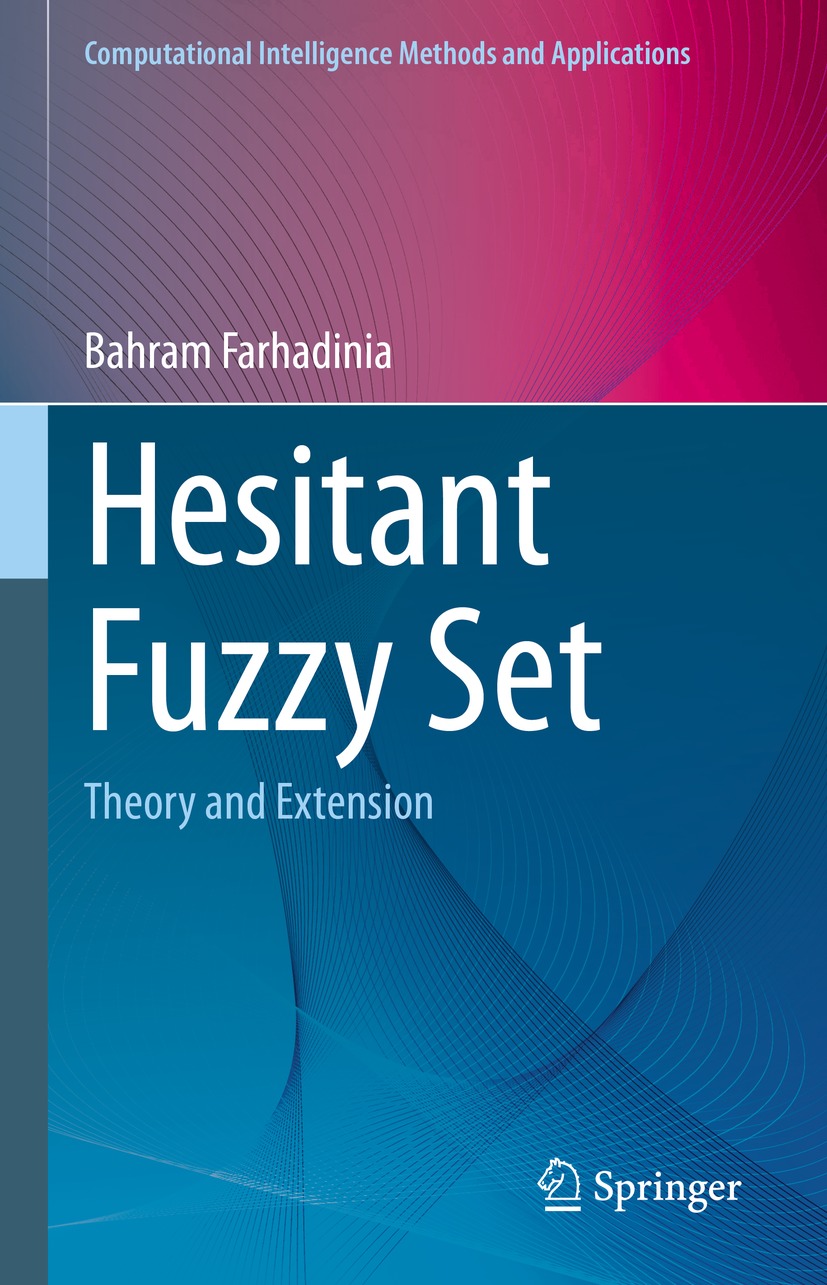Computational Intelligence Methods and Applications
Series Editors
Sanghamitra Bandyopadhyay
Machine Intelligence Unit, Indian Statistical Institute, Kolkata, West Bengal, India
Ujjwal Maulik
Dept of Computer Science & Engineering, Jadavpur University, Kolkata, West Bengal, India
Patrick Siarry
LiSSi, E.A. 3956, Universit Paris-Est Crteil, Vitry-sur-Seine, France
The monographs and textbooks in this series explain methods developed in computational intelligence (including evolutionary computing, neural networks, and fuzzy systems), soft computing, statistics, and artificial intelligence, and their applications in domains such as heuristics and optimization; bioinformatics, computational biology, and biomedical engineering; image and signal processing, VLSI, and embedded system design; network design; process engineering; social networking; and data mining.
More information about this series at https://link.springer.com/bookseries/15197
Bahram Farhadinia
Hesitant Fuzzy Set
Theory and Extension

Logo of the publisher
Bahram Farhadinia
Department of Mathematics, Quchan University of Technology, Quchan, Iran
ISSN 2510-1765 e-ISSN 2510-1773
Computational Intelligence Methods and Applications
ISBN 978-981-16-7300-9 e-ISBN 978-981-16-7301-6
https://doi.org/10.1007/978-981-16-7301-6
The Editor(s) (if applicable) and The Author(s), under exclusive licence to Springer Nature Singapore Pte Ltd. 2021
This work is subject to copyright. All rights are solely and exclusively licensed by the Publisher, whether the whole or part of the material is concerned, specifically the rights of translation, reprinting, reuse of illustrations, recitation, broadcasting, reproduction on microfilms or in any other physical way, and transmission or information storage and retrieval, electronic adaptation, computer software, or by similar or dissimilar methodology now known or hereafter developed.
The use of general descriptive names, registered names, trademarks, service marks, etc. in this publication does not imply, even in the absence of a specific statement, that such names are exempt from the relevant protective laws and regulations and therefore free for general use.
The publisher, the authors and the editors are safe to assume that the advice and information in this book are believed to be true and accurate at the date of publication. Neither the publisher nor the authors or the editors give a warranty, expressed or implied, with respect to the material contained herein or for any errors or omissions that may have been made. The publisher remains neutral with regard to jurisdictional claims in published maps and institutional affiliations.
This Springer imprint is published by the registered company Springer Nature Singapore Pte Ltd.
The registered company address is: 152 Beach Road, #21-01/04 Gateway East, Singapore 189721, Singapore
To my wife, Saeedeh, who never stopped believing in me, and to my sons, Babak and Bardia, who shine brighter than the sun
Preface
Hesitant fuzzy set has moved beyond its infancy and is now entering a maturing phase with increased numbers and types of extensions. Up to now, the existing extensions of hesitant fuzzy set have been encountering an increasing interest and attracting more and more attentions. It is not an exaggeration if it is said that the recent decade has seen the blossoming of a larger set of techniques and theoretical outcomes for hesitant fuzzy sets and their extensions as well as applications.
Inevitably, researches on hesitant fuzzy set and its extensions have inspired a huge amount of publications, including a considerable number of high-impact journal contributions, numerous edited volumes, and monographs. This is while, in spite of the existence of many good monographs, creating a comprehensive book that covers and introduces all kinds of exiting extensions of hesitant fuzzy sets in a unified framework has remained a little neglected or ignored. Thus, it is becoming more and more necessary to gather and provide an organized and rather unified view of these extensions and their key notions, with reference to the relevant literature.
According to the feedback from several experts and based on my own experience gained through the past ten years, the main motivation of writing this book is to provide the students, scholars, and interested readers with a monograph that covers all kinds of exiting hesitant fuzzy extensions in a unified scheme. Further, I hope that this all-encompassing reference book enables scientists and engineers to understand the central aspects of hesitant fuzzy extensions.
This book gives preliminary, but fundamental, information that may be useful for a better understanding of hesitant fuzzy extensions in a unified framework. The current book is organized into twelve chapters that deal with twelve different but related issues, which are listed as follows:
Chapter provides the readers with further background on hesitant fuzzy set as the core concept of this book, and fundamental information bases for the study of direct generalized forms of hesitant fuzzy set. In this regard, the basic operational laws, fundamental definitions, basic operations, different kinds of negations, S-norms, and T-norms together with two kinds of ordering techniques for hesitant fuzzy sets are presented in the first section of this chapter. The other section of this chapter deals with the direct extensions of hesitant fuzzy sets just by representing their basic concepts in brief together with their corresponding set or algebraic operations. Most popular among these direct generalizations are the hesitant triangular fuzzy set, interval-valued hesitant fuzzy set, extended hesitant fuzzy set, higher order of hesitant fuzzy set, dual hesitant fuzzy set, dual hesitant triangular fuzzy set, and interval-valued dual hesitant fuzzy set.
Chapter , in the first section, initially introduces the concept of hesitant fuzzy linguistic term set that reflects the inconsistency and uncertainty of experts. Then, the extended form of hesitant fuzzy linguistic term set, namely extended hesitant fuzzy linguistic term set, is re-stated and a number of its operations are reviewed. In the sequel, the interval-valued hesitant fuzzy linguistic term set is taken into consideration in the third section. In the fifth and fourth sections, the concepts of proportional hesitant fuzzy linguistic term set and hesitant fuzzy uncertain linguistic set are, respectively, addressed. The concept of dual hesitant fuzzy linguistic term set, which allows us to take much more information into account, is reviewed in the sixth section. Two other generalized forms of hesitant fuzzy linguistic term set, which are known as dual hesitant fuzzy linguistic triangular set and interval-valued dual hesitant fuzzy linguistic set, are the issues that lie at the end arguments in this chapter.
Chapter is devoted to introducing briefly the concept of neutrosophic set in the first section. Subsequently, the concept of single-valued neutrosophic hesitant fuzzy set, which is refereed here to as neutrosophic hesitant fuzzy set, is addressed in the second section. In the sequel, it is going to argue about the concept of interval neutrosophic hesitant fuzzy set. Although there may be reported some other kinds of neutrosophic hesitant fuzzy set by different researchers, the aforementioned two types of neutrosophic-based hesitant fuzzy sets are enough to fully understand the other kinds.

